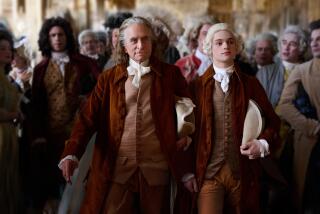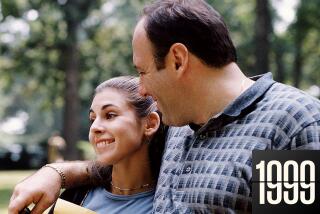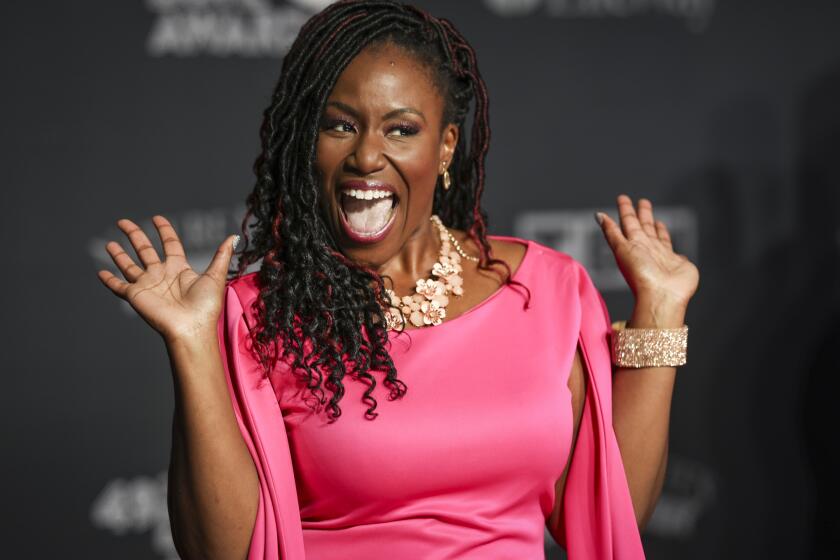Television review: ‘America: The Story of Us’ summarizes hundreds of years in 12 hours
Two years ago, HBO took 8 1/2 hours to chronicle the life of John Adams; starting Sunday, History will take us from the colonizing of Jamestown through the millennium in just 12. “America: The Story of Us” is being touted as “the most in-depth television series ever produced by History,” which is worrisome considering the hour-to-year ratio, as well as “the broadest educational outreach initiative the network has ever undertaken,” which makes a bit more sense.
FOR THE RECORD:
A headline on an earlier version of this article called “America: The Story of Us” an HBO series. It is on the History Channel.
“Broad” is a good word to describe what amounts to, in early episodes, an occasionally illuminating, mildly troublesome and overly produced CliffsNotes to American history. Where “John Adams” drew on the imaginative but detail-oriented mind of David McCullough, “America: The Story of Us” seems to draw its inspiration from Fox’s “24” and the E! Channel.
How else to explain all the shaky camera action or that the first person commenting on the American spirit is Donald Trump? He is followed by Henry Louis Gates Jr. and Colin Powell, but also by Michael Douglas.
Now I begrudge no man his desire to pay homage to the American spirit, but leading with Trump and Douglas does not create a sense of scholarly confidence. But “America: The Story of Us” does not seem terribly concerned about scholarship.
At its best, it is history as streamlined storytelling; at its worst, it’s all about packaging. With an anxious score and urgent narration by Liev Schreiber, the series is clearly an attempt to grab young eyeballs, and indeed DVDs of the program should be made available to every school in the U.S.
Which explains the video game imagery of early sequences, and the mixture of simplistic explanations with random “this will be on the test” details. (What did the native Americans teach the Plymouth colonists to put in the sandy soil so crops would grow? Fish. What natural resource did the Colonies have that the British needed? Timber.)
In the first hour, producer Jane Root seems more enamored of her ability to conjure, in glorious CG, the lifecycle of a tobacco plant or the brick-by-brick construction of New Amsterdam than anything so dull as explaining the complexities of actual history. We breathlessly race through Jamestown and Plymouth, pausing just long enough to capture the sight of a Jamestown colonist being burned at the stake for killing his pregnant wife with the intention to eat her — and to learn that the Plymouth colonists teamed with local natives to raid and butcher another tribe, before landing, within the first hour, in pre-Revolutionary Boston. There, the oppression of British occupation is illustrated by Redcoats repeatedly bumping into colonists. On purpose.
The second hour takes us through the actual Revolution. We learn the grim fact that more American soldiers died in British prison ships than in battle and that George Washington made the brilliant decision to inoculate his soldiers against smallpox (a stomach-turning process that occupied much of “John Adams” as well). But each event and new personality is inevitably introduced as having “changed the course of the war”; if I kept track properly of all these course changes, I believe the British should have won.
It’s easy to see how “America” could provide a visual scaffolding that could aid in the classroom, but it is no substitute for a history lesson. The noble intentions of the project are too often overwhelmed by the desire to ensure that viewers understand How Important each and every event was. Instead of creating an unflagging sense of tension, the effect of this tactic is to become increasingly tedious. It’s unfortunate because you can say many things about the United States of America and its citizenry, but we’re rarely tedious.
mary.mcnamara@latimes
.com
More to Read
The complete guide to home viewing
Get Screen Gab for everything about the TV shows and streaming movies everyone’s talking about.
You may occasionally receive promotional content from the Los Angeles Times.







